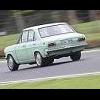Budget Rb30 - Neo Head Build Advice
Announcements
-
Similar Content
-
Latest Posts
-
thanks GTSboy. My confusion at the moment is i am trying to locate the ignition, ECU battery power and the ECU negative The closest thing i can find is the for the S15 on Page 8 of the Wiring Specialties web page https://drive.google.com/file/d/0B9F33_M_GgENQnZ6STMxVmVNd1E/view?resourcekey=0-eZ4nNRwRoqa1qvKlWWHm8A I cannot find the same diagram for the R33 RB25DET Series 2 dash plug pin out.... Do you know what the Pins? or know where i can find the same pinout diagram for the RB dash plug? Thanks for the advice on the box... i like a 6 speed so might be on the lookout or the box now.. a topic of discussion for another post...
-
Put another overflow bottle (ie, a 1.25 coke bottle or similar) under the overflow hose and see if it is being pushed out there or if it is disappearing into the engine.
-
Staring on a stand is no issue. You just have to wire everything up, give it fuel and cross your fingers that the stand is robust enough. Arranging the inlet plumbing is often the hardest part, without any surrounding structure to hand some of it from. No need for coolant if you only want to run it for <1 minute. As to the gearbox - I think the little Aisin box is a bit stronger than the other small Nissan boxes that went behind SRs, but I wouldn't be too keen to test its limits with the torque of a boosted 25. I don't know if you can retain the box and the tailshaft. The box won't connect to the RB without an adapter of some sort, which is either a plate that will push the engine forward (which is not good for fitting it into the bay's available space) or push the box back, which messes with the box position and tailshaft length - OR - cut and shut work on the bellhousing, which is a long way from "least modification". I'd be buying a new 370Z 6 speed or similar, doing what has to be done to that to make it fit RB (ie, cut and shut bellhousing) and the requisite tailshaft custom/mods.






Recommended Posts
Create an account or sign in to comment
You need to be a member in order to leave a comment
Create an account
Sign up for a new account in our community. It's easy!
Register a new accountSign in
Already have an account? Sign in here.
Sign In Now